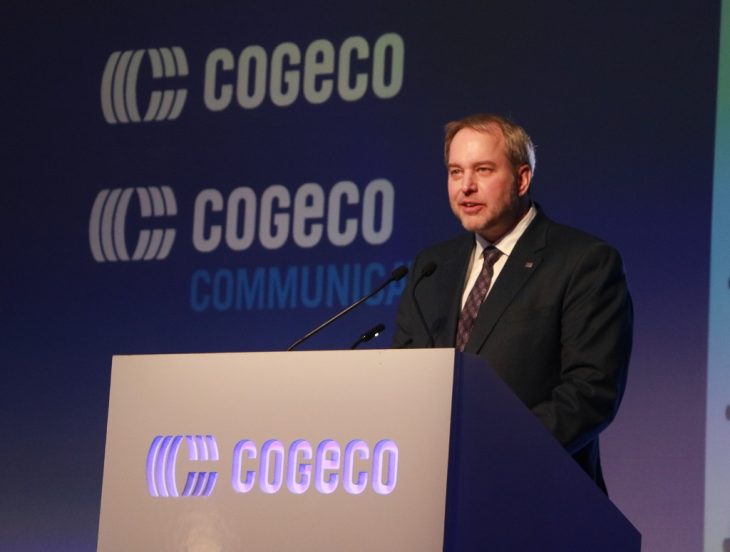
By Ahmad Hathout
MONTREAL – Cogeco CEO Philippe Jette said Friday that wireless service providers are in a better position to focus on negotiating mobile virtual network operator deals with the conclusion of Rogers’s acquisition of Shaw.
“It provides more predictability throughout the industry now that this transaction is over and we know what to expect of it,” Jette said on the company’s second-quarter conference call Friday morning.
“I think now every player is at a better place with the conclusion of the transaction and getting ready for the next steps negotiating partnerships and rates,” he added.
Earlier this month, Rogers and Videotron closed their purchases of Shaw and Freedom Mobile, respectively, after Innovation Minister Francois-Philippe Champagne allowed for the deals to go through on conditions including contractually solidifying the companies’ previously made commitments and building-in penalties for non-compliance.
Cogeco is preparing to open a wireless business for the first time based on the MVNO model the CRTC approved in 2021, which provides regional players with spectrum and infrastructure mandated access to the large mobile network operators’ (MNO) wireless networks. Jette said on the call the company will negotiate with the Rogers, Bell and Telus for wholesale rates and will update the public with its commercial plans by the end of this fiscal year.
“The key for us [right now] is to find those wholesale rates as quick as possible and then we can see what other plans will be made after that,” Jette said, adding the CRTC approving reasonable access rates is “critical” to its success.
The Montreal-based company, which said it meets the regulator’s requirements for mandated access – including having spectrum in 91 per cent of its footprint – said it will continue to focus on a “capital light” model, which is in-line with its long-held belief that the mobile wireless business must make financial sense for it to create one.
“The model is a little bit different than the traditional model where you build and you try to find customers and load up revenue,” Jette elaborated. “Here we will be able to rent, sell and actively market and sell, find customers and gradually build where we need to and only when and where we need to as we can lease capacity for a long time,” alluding to the MVNO regime’s sunset period after seven years.
The company noted that the CRTC approving reasonable wholesale MVNO access tariffs is key to its participation in the market.
Taking the company’s Canadian and Breezeline American business together, Cogeco reported for the three months ending February 28 that it saw increased revenue by 1.2 per cent to $757 million and decreased profit by 13.6 per cent to $102.6 million compared to the same period last year. Lower profit was blamed on higher financial expenses, acquisition, integration and restructuring costs – part of which involved the $100-million February acquisition of oxio’s internet business.
The company said oxio serves approximately 48,000 residential broadband customers in Quebec, Ontario and western provinces.
The company added 7,799 new customers compared to 4,795 it added in the same period last year for a total base as of the end of February of 782,862. The company attributed that to new customers following fibre to the home expansion, mainly in Quebec.
The company lost 4,335 video subscribers in the quarter, less than the 5,152 it lost in the equivalent period for a total base of 639,994. It attributed the loss to a “continuous change in the video consumption environment” and inflation.
The company also lost fewer phone subscriber this period – 2,095 compared to 3,222 in the equivalent period – for a total base of 385,592. That was attributed to more landline cancellations in light of more uptake in mobile wireless service.
Photo of Cogeco CEO Philippe Jette, by Steve Faguy



